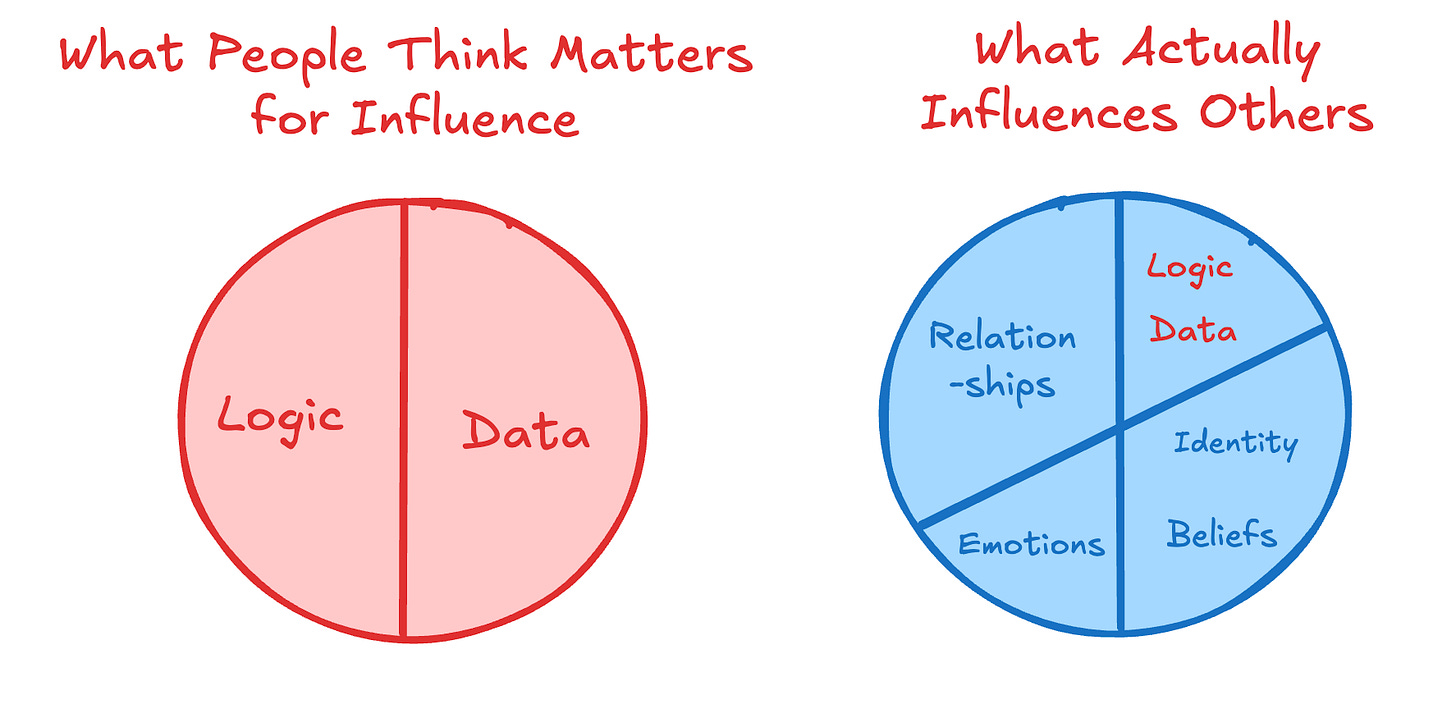How To Expand Your Influence Skills
Having the data or being “right” doesn’t win hearts and minds. We work with humans. And humans are emotional creatures. Build your influence through getting comfortable with managing emotions.
Do you want more influence at work? Do you want to shape the opinions of others? Most of us were told that we need to be data-driven and have a logical foundation for all decisions. This is how we build influence — data, data, and more data. However, the reality is that having the data or being “right” doesn’t win hearts and minds.
We work with humans. …


